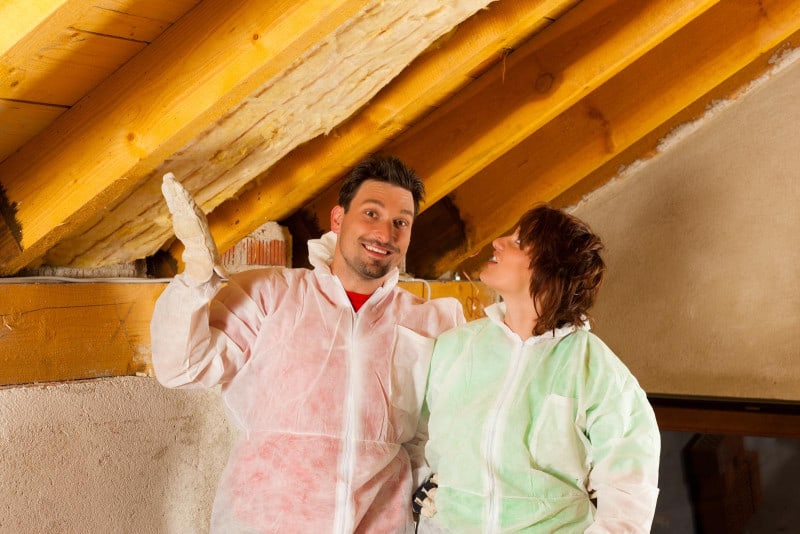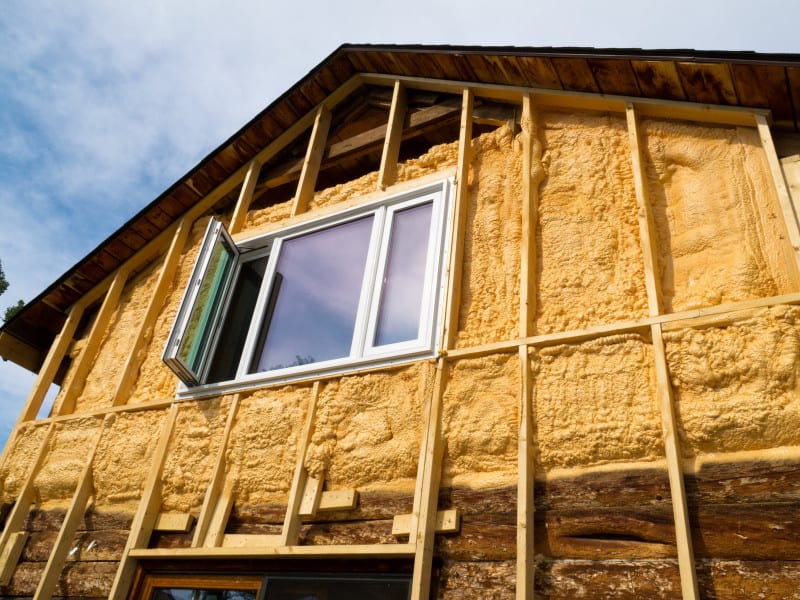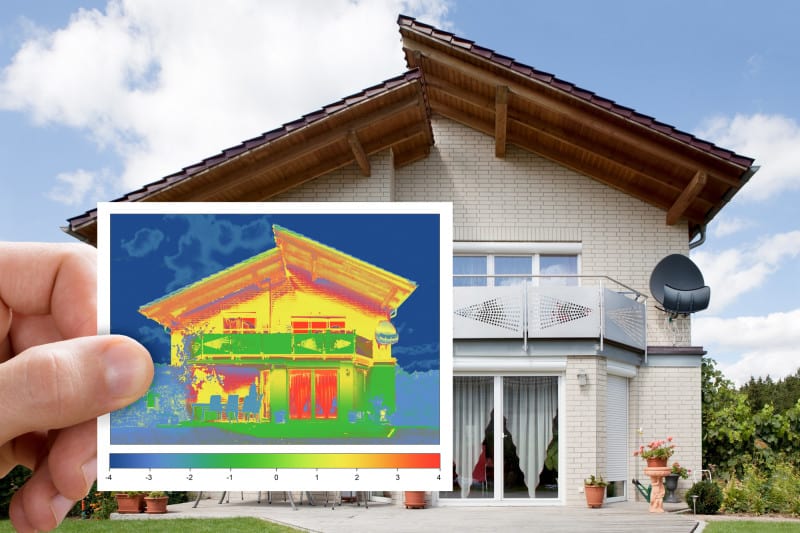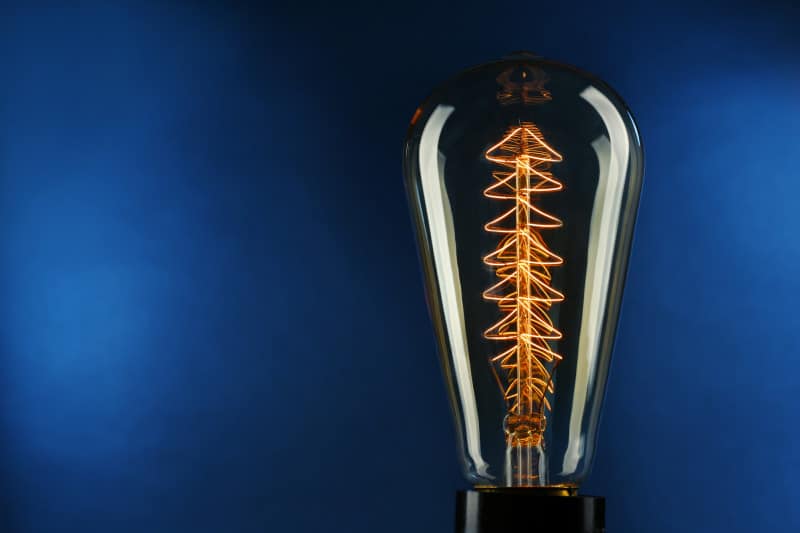Home insulation is an essential part of a home’s structure that helps to keep it comfortable and energy efficient.
But some types of insulation last longer than others.
I was intrigued to learn what type of home insulation lasts the longest, and this is what I learned:
Spray foam insulation typically lasts the longest among all types of home insulation. It has a lifespan of over 80 years and provides high R-value insulation. It also seals air leaks and prevents moisture buildup, making it a durable and energy-efficient option for homes.
If you’re considering what type of insulation to choose for your home, it’s important to consider which will last the longest and provide the best value over time.
In this article, I’ll discuss what type of home insulation lasts the longest and how you can make sure that you’re getting the most out of your investment.
From fiberglass batting to spray foam, there are many different types of insulation available on the market today. Each type has its own unique benefits and drawbacks when it comes to longevity – but only one material stands out as being able to stand up against wear and tear over time. In this article, I’ll discuss why and how this type of insulation can help you ensure that your home stays comfortable and energy-efficient for years to come.
Finally, I’ll provide tips on how you can maintain your chosen type of insulation so that it continues to perform optimally throughout its lifespan. With these guidelines in mind, you can be confident that your investment in home insulation will pay off in the long run! So let’s get started by discussing which type of insulation lasts the longest!
Overview of Home Insulation Options
When it comes to home insulation, there are many options available.
Each type has its own benefits and drawbacks.
It can be overwhelming to decide which type is right for your home and your needs.
So, let’s take a look at the various types of insulation and what makes them unique.
Fiberglass batts are one of the most common types of insulation.
They’re relatively inexpensive, easy to install and can last for years if maintained properly.
However, fiberglass batts tend to absorb moisture and can become less effective in humid environments.
Cellulose is another popular choice–it’s made from recycled paper materials and is highly effective against both heat loss and sound transmission.
While it’s more expensive than fiberglass batts, cellulose has the added benefit of being fire resistant.
Foam board insulation is also an option, as it provides superior air sealing capabilities compared to other insulation materials.
Finally, spray foam insulation offers superior air sealing capabilities and lasts the longest, but it’s more expensive than other types of insulation.
No matter which type you choose, make sure you consult with an expert before making any decisions about your home’s insulation needs.
Knowing the pros and cons of each option will help you make an educated decision that will save you money in the long run and provide superior energy efficiency in your home.
How Long Do The Most Popular Home Insulation Types Lasts
With so many different types of home insulation out there, it can be tough to decide on which one to choose.
If your primary concern is the longevity of the most common types of home insulation, I’ll break this down for you to help make your decision a little easier…
Let’s start by looking at fiberglass insulation.
This is probably the most common type of insulation you’ll find in homes.
It’s made up of tiny glass fibers and comes in batts or rolls that you can easily install yourself.
Fiberglass insulation typically lasts around 25-30 years, depending on factors such as the quality of installation and the environment it’s installed in.
Proper installation and maintenance can help extend the lifespan of fiberglass insulation.
Another popular type of insulation is cellulose.
This is made from recycled paper and other materials, which makes it an eco-friendly option.
Cellulose insulation is blown into walls and attics, which means it can fill all the nooks and crannies and provide excellent coverage. It has a lifespan of around 20-30 years.
If you’re looking for something that lasts even longer, spray foam insulation might be the way to go.
Two chemicals are mixed that react and expand to make this type of insulation, filling all the gaps and cracks in your walls and ceilings.
It has a lifespan of over 80 years, making it a great long-term investment.
Of course, there are plenty of other types of insulation out there, but these are some of the most common.
No matter which one you choose, it’s important to make sure you have enough insulation in your home to keep you comfortable and save money.
And remember, if you’re not sure which type of insulation is right for you, it’s always a good idea to consult with a professional.
Materials Used In Home Insulation
There are several different types of insulation materials out there, each with its own unique properties and benefits.
First, we have fiberglass insulation, which is made from tiny glass fibers.
It’s a popular choice because it’s affordable, easy to install, and widely available.
Fiberglass insulation comes in batts or rolls and can be cut to fit any space. It’s also fire resistant and doesn’t absorb moisture, which makes it a durable option.
Next up, we have cellulose insulation, which is made from recycled paper and other materials.
This eco-friendly option is blown into walls and attics, filling every nook and cranny to provide excellent coverage.
Cellulose insulation is also treated with fire-retardant chemicals to make it safer.
Spray foam insulation is another popular option, albeit more expensive.
It’s made by mixing two chemicals that react and expand, filling all the gaps and cracks in your walls and ceilings.
Spray foam insulation is extremely energy efficient and can reduce your energy bills by up to 50%.
It’s also a great long-term investment, as it can last over 80 years.
Other types of insulation materials include mineral wool, which is made from rock or slag fibers, and rigid foam, which is made from polystyrene, polyurethane, or polyisocyanurate.
Each of these materials has its own unique benefits and drawbacks, so it’s important to choose the one that’s right for your home.
When it comes to choosing the best insulation material for your home, you’ll want to consider factors such as cost, energy efficiency, and lifespan.
Maintenance & Repair To Increase Life Span
When it comes to home insulation, proper maintenance and repair can go a long way in increasing its lifespan.
By taking care of your insulation, you can ensure that it continues to provide optimal performance and energy efficiency for many years to come.
One of the most important things you can do to maintain your insulation is to keep it dry.
Moisture can cause insulation materials to degrade over time, which can reduce their effectiveness and lifespan.
Make sure to fix any leaks in your roof, walls, or pipes, and consider installing a vapor barrier to prevent moisture from entering your home.
Another key factor in insulation maintenance is ensuring that it’s properly installed.
Insulation that’s installed incorrectly can lead to gaps or compressions, which can reduce its effectiveness.
If you’re not confident in your ability to install insulation yourself, it’s always a good idea to hire a professional.
Regular inspections can also help you catch any issues with your insulation before they become major problems.
Check your insulation periodically for signs of damage or degradation, such as mold, pests, or air leaks.
If you notice any issues, make repairs or replacements as needed to keep your insulation in top condition.
Finally, it’s important to keep in mind that even the best insulation won’t last forever.
Over time, all insulation materials will degrade and lose their effectiveness.
By following these tips for insulation maintenance and repair, you can ensure that your insulation lasts as long as possible, providing optimal performance and energy efficiency for your home.
Environmental Impact Of Home Insulation
While insulation can help reduce energy consumption and save money on bills, you may want to consider the environmental impact of the materials used as well as its longevity.
One of the most eco-friendly options for home insulation is cellulose.
This material is made from recycled paper and other materials, which makes it a sustainable choice.
It also helps reduce waste by using materials that would otherwise end up in landfills.
Fiberglass insulation is another popular choice, but it’s not as environmentally friendly as cellulose.
While it’s made from recycled glass, the manufacturing process can be energy intensive and produce greenhouse gas emissions.
Spray foam insulation is energy-efficient and long-lasting, but it’s not without its environmental drawbacks.
The chemicals used to make spray foam insulation can be harmful to the environment, and the manufacturing process can produce greenhouse gas emissions.
By considering the environmental impact of your insulation choices, you can help reduce your carbon footprint and create a more sustainable home.
Conclusion
there are several types of insulation available for homeowners, each with its own unique benefits and drawbacks.
While fiberglass insulation is the most common option and has a lifespan of around 25-30 years, cellulose insulation is an eco-friendly option that can last for around 20-30 years.
If you’re looking for a long-lasting and energy-efficient option and you have the budget to spend a little more, spray foam insulation is the way to go, with a lifespan of over 80 years.
Regardless of which insulation material you choose, proper maintenance and repair are crucial to ensuring optimal performance and longevity.
It’s also important to consider the environmental impact of your insulation choices and make eco-friendly decisions whenever possible.







